Kayaking Quinn Bayou and Blackwater River
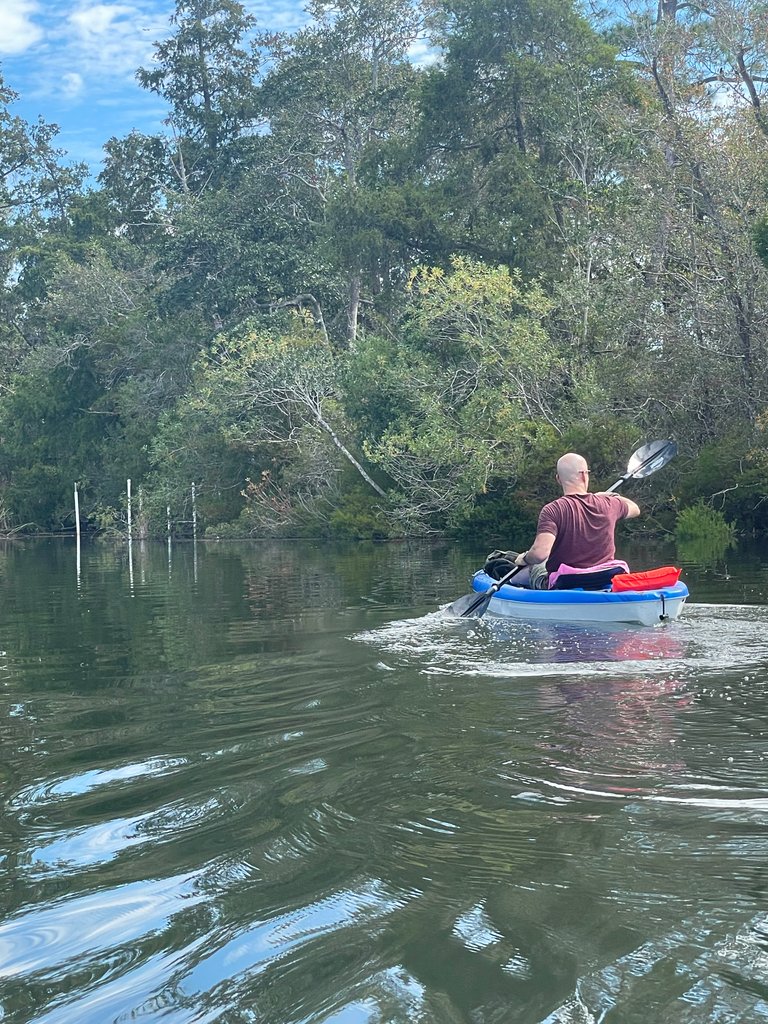
For those of you who have read my previous posts, you'll know that disc golf is my primary outdoor activity. However, kayaking is quickly becoming my second favorite. This was my second outing in a week's time and I brought my fiance along for the ride. Like me, she's quickly falling in love with adventuring out on the water.
We found the perfect launch point on the Quinn Bayou and it's a remarkable one. The bayou is fed by the Blackwater River, which feeds into Blackwater Bay. Escambia Bay is connected to Blackwater Bay by a series of tributaries and we can access all of these waters in a single trip—rather quickly too.
Quinn Bayou also happens to be an angler's dream and it's filled with largemouth bass and speckled trout. Row down a mile and you're into red fish and blue gill. Both the bayou and the river are rife with turtles basking in the sun anywhere they find purchase, including driftwood, old piers, and the shoreline. They don't hang out long, however, and will nose dive into the deep the moment I turn my bow in their direction.
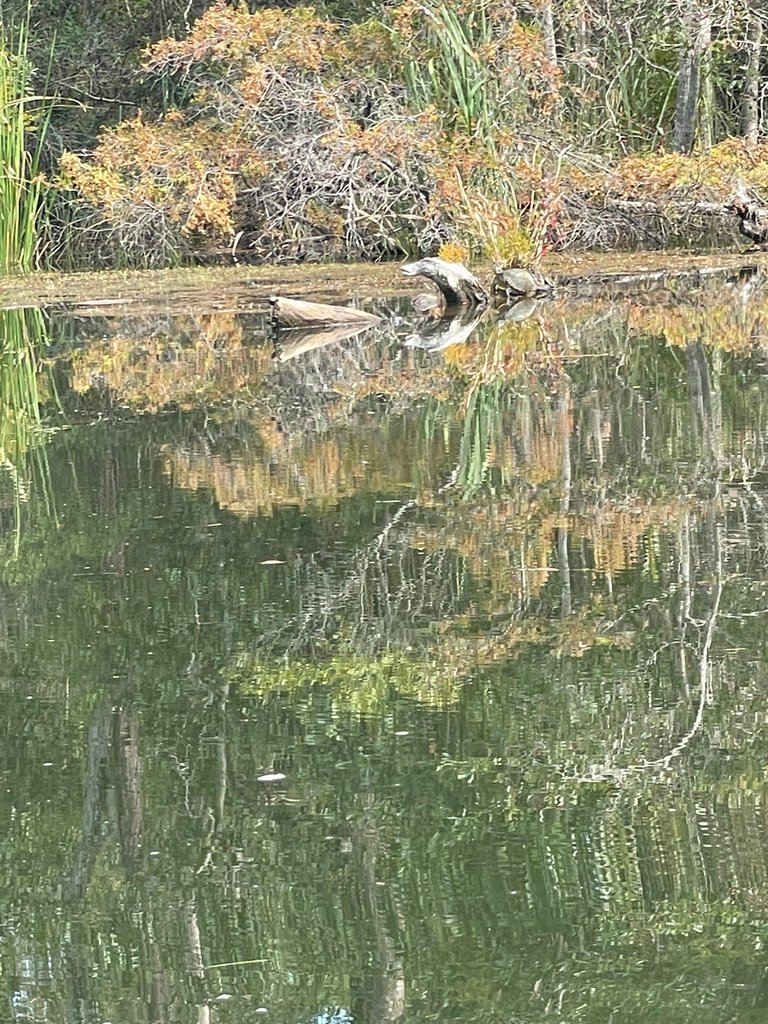
Alligators are frequent as well, though they are more skittish than turtles. We've spotted several so far but couldn't get close enough for a decent picture or two before they disappeared into the deep, only leaving behind a patch of bubbles as evidence they were there.
I've long been a history buff, thoroughly absorbed with indigenous, colonial, and civil war-era history, as well as Anglo-Saxon and ancient Egyptian history across the Atlantic. If there is one thing that can be said of Blackwater River and Blackwater Bay, it's that they're historic. I try to remind myself that it's not spooky, knowing that I am rowing over ancient shipwrecks local divers occasionally frequent when the water is clear enough.
The HMS Mentor haunts Blackwater Bay and River, as it is one of the most enduring mysteries in Pensacola and Milton History. Originally stationed in Pensacola, Florida in 1780, the HMS Mentor was ordered to retreat up Blackwater Bay to escape Spanish hands. The Spanish invaded Pensacola and the Milton area in 1781 and the British didn't want them to have the Mentor.
Unfortunately, as the Spanish laid siege to the city, a nasty squall rolled in, capsizing the HMS Mentor somewhere along the Blackwater Bay or River. The British set it ablaze and sunk it where it capsized. The desire to keep it from the Spanish Army was strong enough to destroy it, rather than deliver it to the enemy. To this day, the wreckage has never been found. There are several bodies of water all converging close together and it creates a problem, stirring up the sea bed and obscuring everything below about 2 feet.
Blackwater Bay and Blackwater River converge very close to downtown Milton, with the city sitting right on the shore of the river. Here is a picture at water level as we moved downstream. 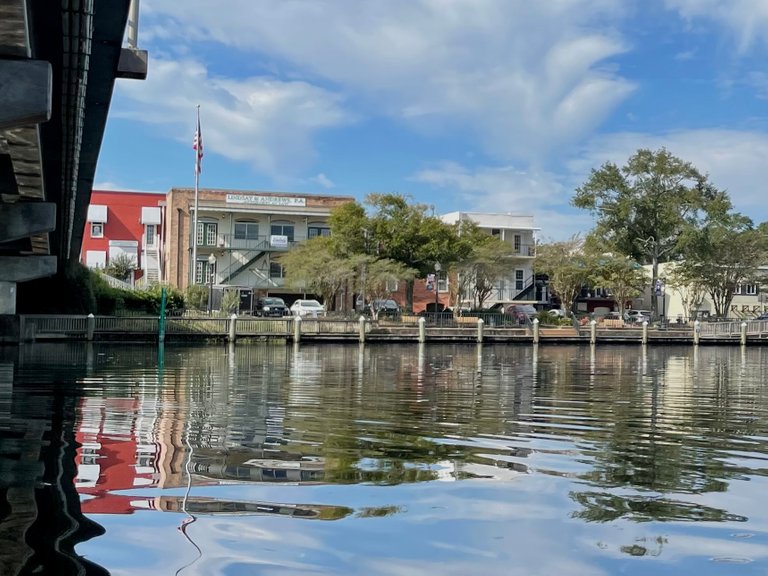
The HMS Mentor was a 24-gun sloop that the British originally captured from the Americans in the previous decade. The Spanish were ultimately successful, forcing the British to cede Northwest Florida, including Santa Rosa County. The Spanish also captured 1,100 British prisoners of war, ultimately killing over 200 British soldiers during the conflict.
Somewhere, in the depths of the widest sections of Blackwater River or Blackwater Bay, rests the HMS Mentor. A little farther downriver, we passed under the downtown bridge leading from Milton to Crestview and Navarre. 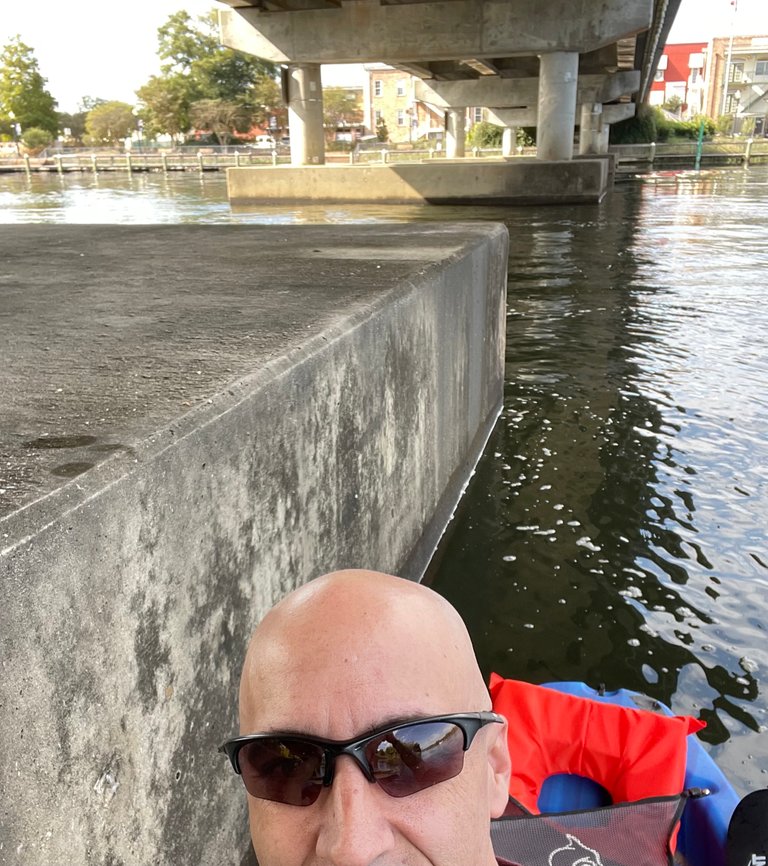
This is the Blackwater River Bridge leading in and out of downtown Milton. It was built in 1986, replacing one that was originally constructed in 1920 and refurbished and improved about a billion times. The current bridge has been here most of my life, so I don't remember anything else.
Not far down the river is another fascinating bridge. At least, it's fascinating to me. It's a railroad bridge that's part of the railroad line that runs from Pensacola, Florida to Jacksonville, Florida. The design is known as the "Warren through truss swing." A portion of the bridge rotates open, like a swinging gate, on a gigantic cylinder. It stays open the majority of the time, allowing boat passage to and from.
Trains are rare through the area but they do come from time to time and the old bridge swings into action, closing quickly. The bridge has been there for decades and is slated for replacement. However, it's been slated for replacement for several years off and on, so who knows if it will ever happen. The bridge itself serves as another symbol of the "bayou aesthetic," where everything seems to operate just fine, but carries the authenticity of old-school architecture, built in a place where the elements are always a challenge.
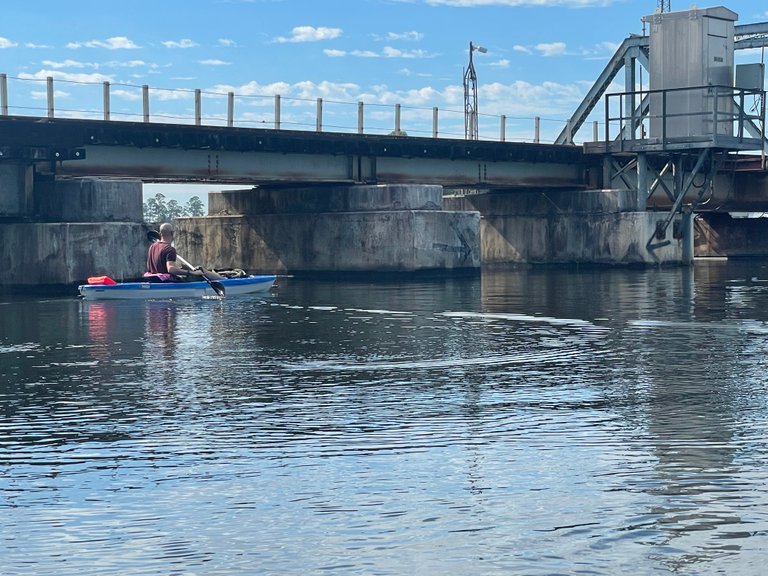
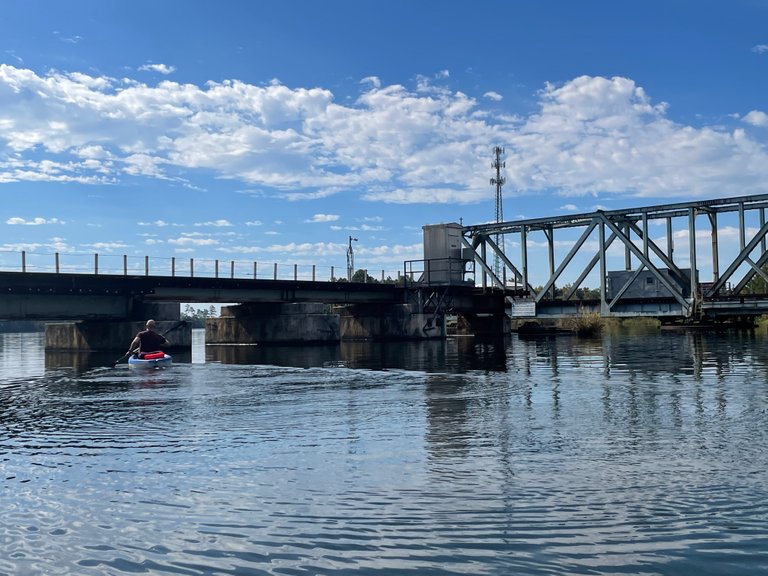
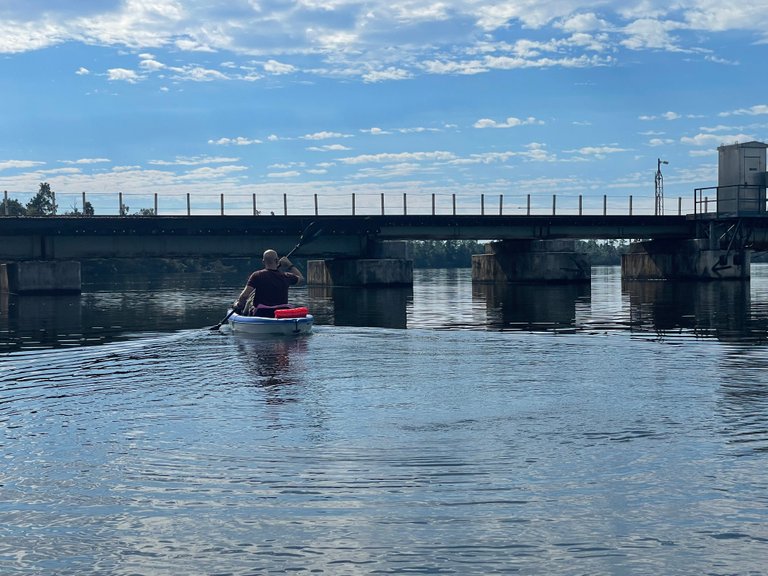
That's as far as our adventure carried us for the time being. The bridges and the historical importance of the area are far too intriguing to stay away for too long, however. Next time, we want to go out with our trusty metal detector and my E-tool.
We have to be careful though. It's not always easy to tell where it's legal to dig and where it's not. In fact, the odds are probably against us being able to use a metal detector at all. State and Federally owned lands are incredibly strict about metal detector use. If you happen to find an arrowhead laying on the shoreline and pick it up, you can face stiff fines and potential jail time if you so much as pocket it.
We will make some phone calls and see what we can find out. If you pull up an image on Google Earth, there are several islands farther downriver. For the most part, they look deserted, and exploring them will definitely be worth another post as soon as I can get out there, experience it, and get back to Ecency.
I've only briefly touched the surface of a deep well of history here—a history that I, in my profound ignorance, was not even aware of, despite my professed love of history. Hopefully, I find something worthwhile soon enough.
Fortunately, outside of the history of the area, it's a beautiful area to explore. We don't get the annual color change in the leaves here but the weather has cooled enough that we can spend a day on the water without needing an IV to replace our fluid loss. Christmas here is sometimes warm enough to wear shorts and a T-shirt and sometimes it's just cool enough for a sweater.
Fall weather on the water is truly a special time in Florida. It's cool enough to enjoy the entire day and warm enough that most of the alligators, turtles, snakes, and various lizards are still out and about. The migratory birds are starting to arrive as well, so the cardinals are joining the buzzards, falcons, cranes, blue jays, and mockingbirds that frequent the area.
The river is high right now, but I can still see the underwater vegetation just brushing the surface of the water column. Driftwood litters the banks, providing plenty of purchase for amphibians throughout the area. 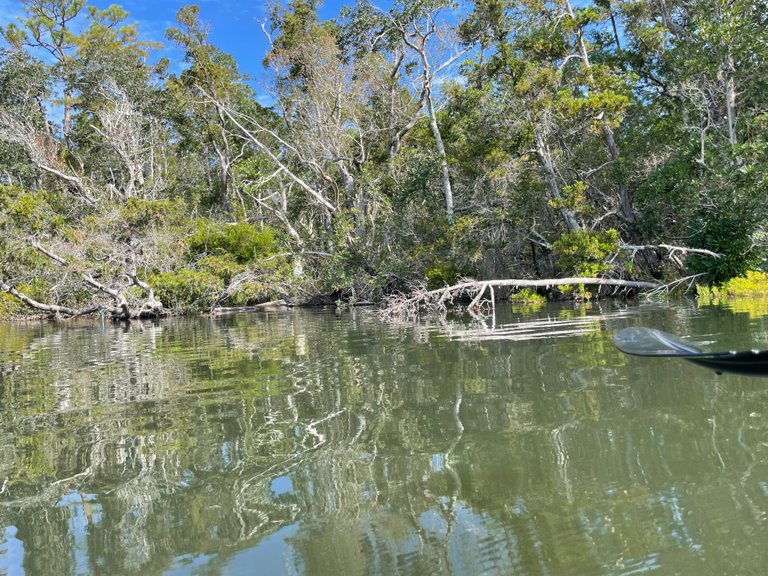
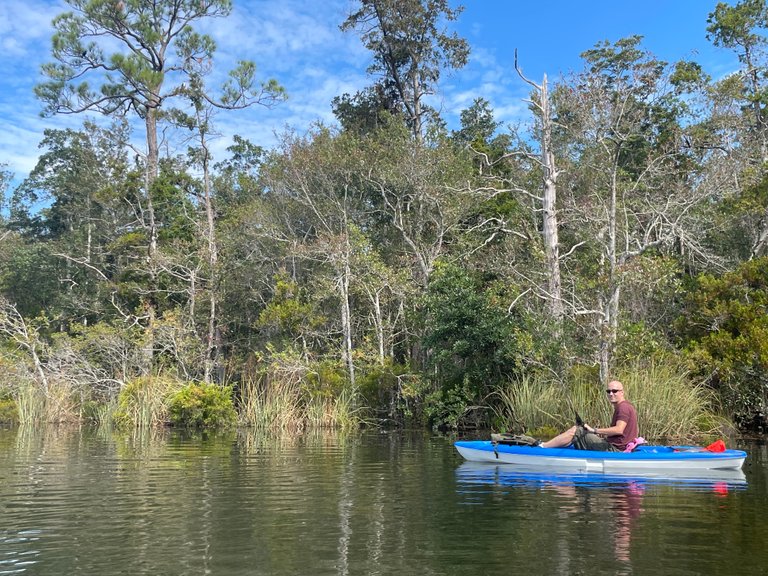
When I imagine the fact that the area through here is largely unchanged since the days when British and Spanish soldiers traveled the same area, it's a pretty humbling experience. According to the local history books, Blackwater River and Blackwater Bay were highly populated by travelers back in the day. Now, it's largely quiet, with the occasional boat passing by.
The Choctaw Indians traveled this area extensively as well. Siding with the British they were an indispensable source for navigational purposes throughout Great Britain's conflict with Spain over the Florida Peninsula and panhandle. Even though Spain triumphed, their victory was short-gained, with the United States' desire for Florida growing with US interests in controlling the Mississippi. Florida officially became a part of the United States in 1821.
Pensacola, Milton, and the surrounding areas are rich in history and natural beauty. I can't wait to get back out there and discover more, along with the potential for some metal detecting. I'll be sure to share what I learn and what I find in follow-up posts.
Yay! 🤗
Your content has been boosted with Ecency Points, by @tdgodwin3780.
Use Ecency daily to boost your growth on platform!
Support Ecency
Vote for new Proposal
Delegate HP and earn more
Oh, so kayaking too? Yeah, I remember the disc golf activity, and kayaking seems already so familiar. I was born in a city where a river passes (The Danube, in Europe) and there is a kayak club and kayak school.
Seems a lot of adventures that you have and knowing the historical background of the places where you pass makes the whole kayaking activity more than just kayaking :)))
I agree! It’s pretty exciting knowing that I’m probably kayaking over centuries old shipwrecks in the bay and river, especially knowing that at least one of them is a yet unfound, 24-gun sloop!
Support for you.
@tipu curate
Upvoted 👌 (Mana: 22/42) Liquid rewards.
Thanks!
I also really like rowing as in the picture above
Yeah I’m still trying to get used to pushing the paddles rather than pulling. I have a Garmin Venu 2 that tracks my rowing and it’s getting better each time lol.